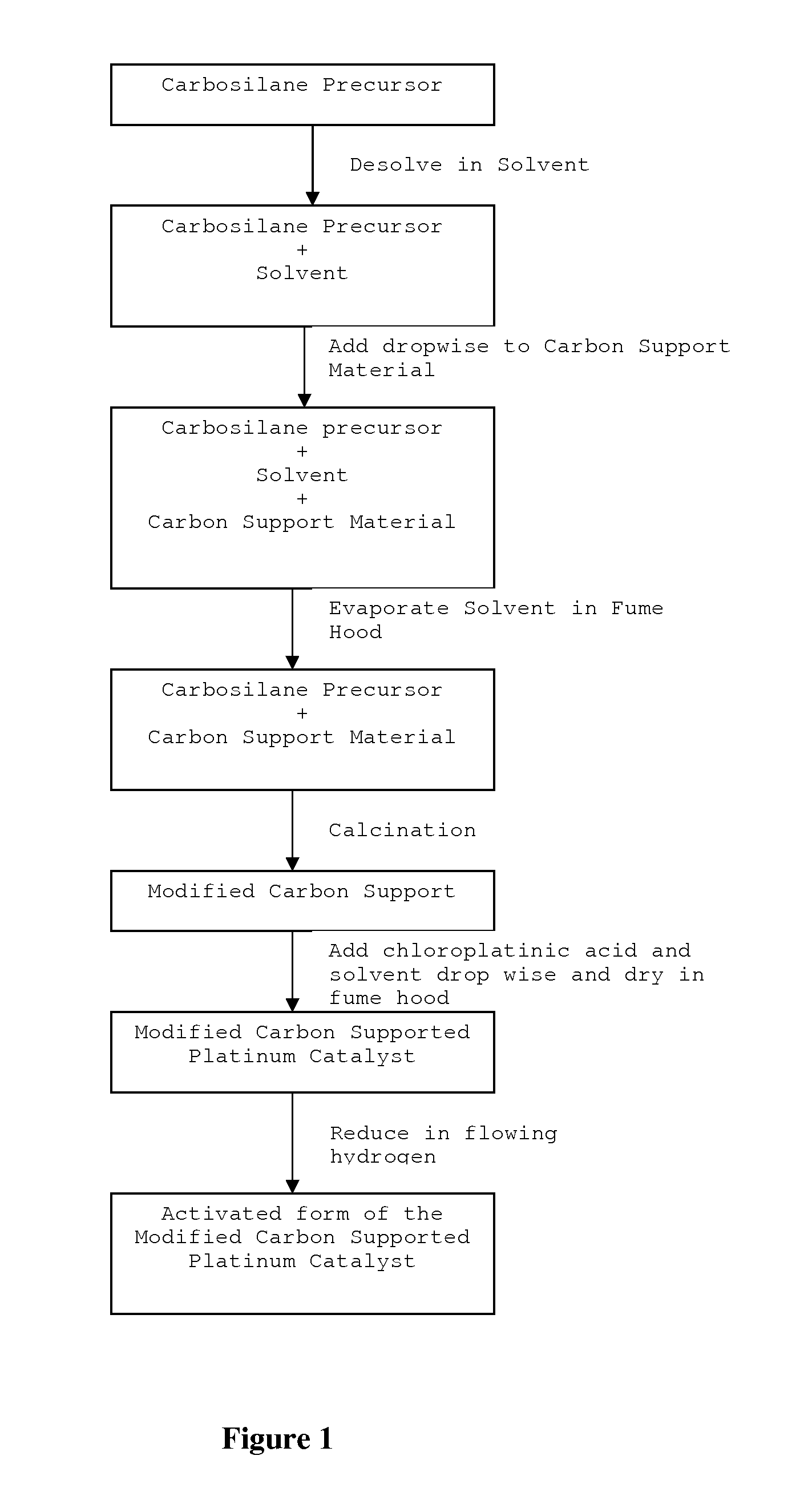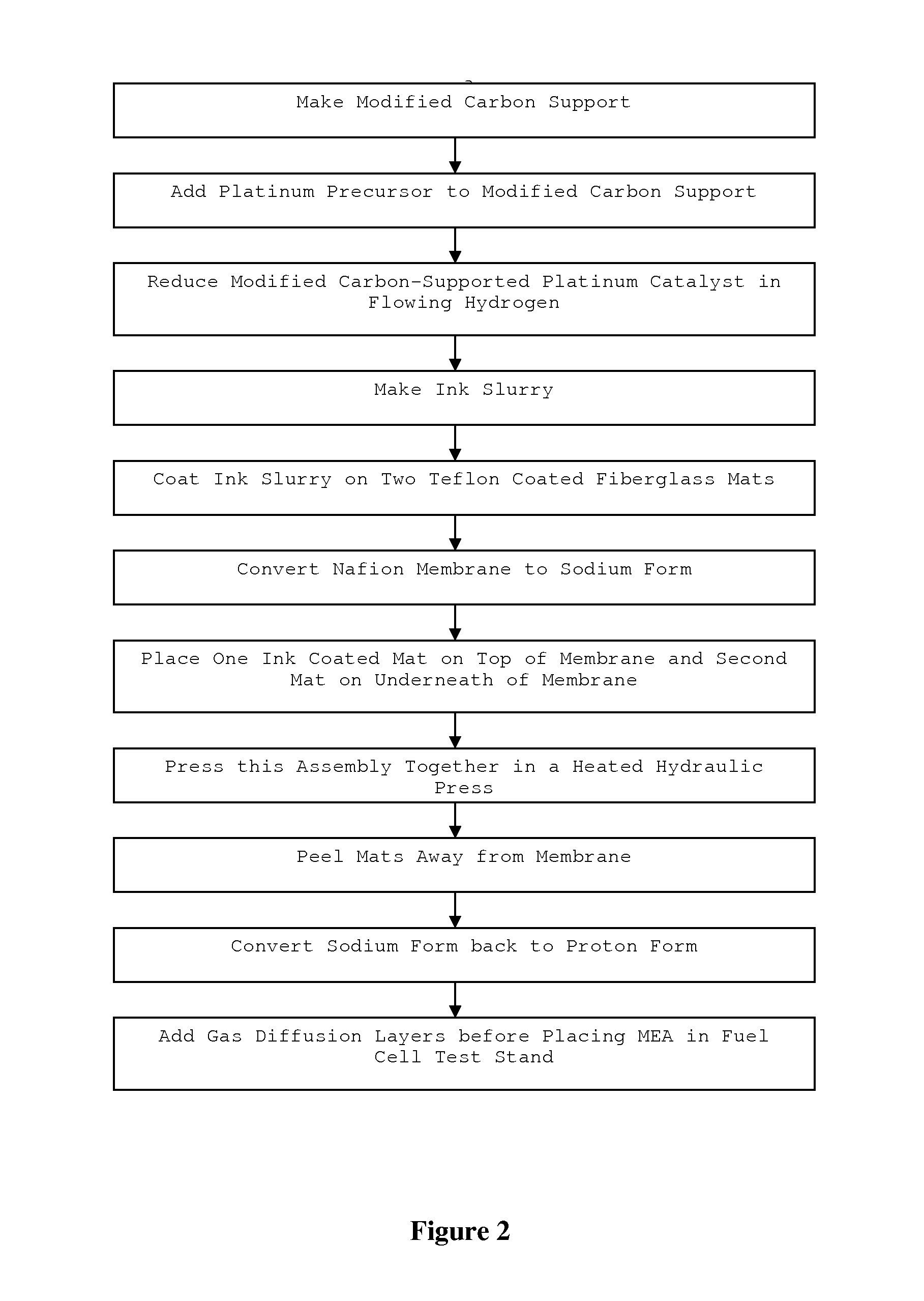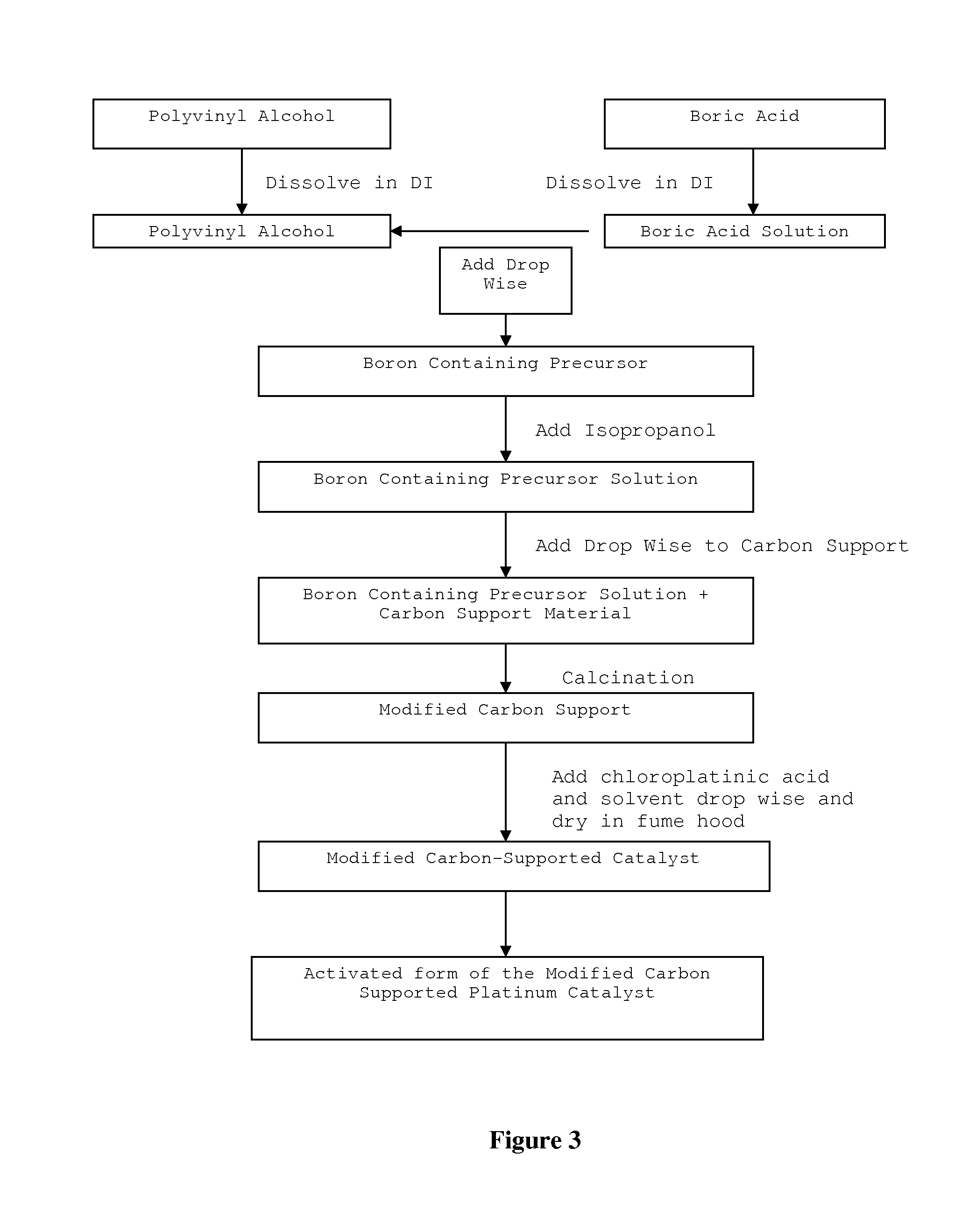Fuel Cells with Improved Durability
a technology of fuel cells and durability, applied in the direction of cell components, organic compounds/hydrides/coordination complex catalysts, physical/chemical process catalysts, etc., can solve the problems of affecting the commercialization of polymer electrolyte fuel cells (pefcs), affecting the performance of pefcs, and only marginally improving performance, so as to achieve the effect of enhancing pefc durability and slowing down deactivation
- Summary
- Abstract
- Description
- Claims
- Application Information
AI Technical Summary
Benefits of technology
Problems solved by technology
Method used
Image
Examples
example 1
[0066]Preparation of Modified Carbons from Allylhydriodopolycarbosilane
[0067]Allylhydridopolycarbosilane (0.0011 g) was dissolved in 2.8 g of toluene to make a solution. This solution was the added dropwise to 1.0 g of dried carbon black. The solvent was allowed to evaporate in a fume hood for about 3 hrs and then the sample was calcined under standard conditions above to form a modified carbon.
example 2
[0068]Preparation of Modified Carbons from Allylhydriodopolycarbosilane
[0069]Allylhydridopolycarbosilane (0.055 g; Starfire Systems SMP-10) was dissolved in 14.0 g of toluene to form a solution. This solution was then added dropwise to 5.0 g of dried carbon black. The solvent was allowed to evaporate in a fume hood for about 3 hrs and then the sample was calcined under standard conditions above to form a modified carbon.
example 3
[0070]Preparation of Modified Carbons from Allylhydriodopolycarbosilane
[0071]A solution was made by dissolving 0.137 g of allylhydridopolycarbosilane in 14.0 g of toluene. This solution was the added dropwise to 5.0 g of dried carbon black. The solvent was allowed to evaporate in a fume hood for about 3 hrs and then the sample was calcined under standard conditions above to form a modified carbon.
PUM
| Property | Measurement | Unit |
|---|---|---|
| temperature | aaaaa | aaaaa |
| temperatures | aaaaa | aaaaa |
| temperatures | aaaaa | aaaaa |
Abstract
Description
Claims
Application Information
 Login to View More
Login to View More - R&D
- Intellectual Property
- Life Sciences
- Materials
- Tech Scout
- Unparalleled Data Quality
- Higher Quality Content
- 60% Fewer Hallucinations
Browse by: Latest US Patents, China's latest patents, Technical Efficacy Thesaurus, Application Domain, Technology Topic, Popular Technical Reports.
© 2025 PatSnap. All rights reserved.Legal|Privacy policy|Modern Slavery Act Transparency Statement|Sitemap|About US| Contact US: help@patsnap.com



